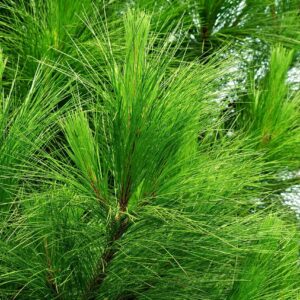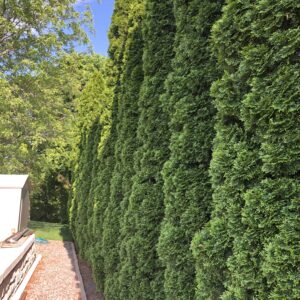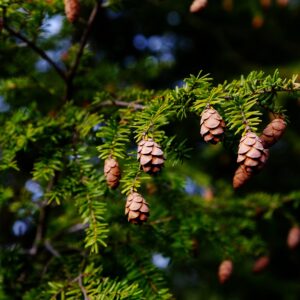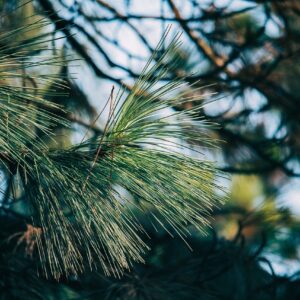Balsam Fir (Abies balsamea) – A Fragrant, Cold-Hardy Evergreen
Balsam Fir is a medium-sized, slow-growing evergreen tree native to North America’s boreal forests. It is best known for its dense, dark green needles, aromatic resin, and symmetrical conical shape. This cold-hardy conifer is commonly used as a Christmas tree, ornamental landscape tree, and wildlife habitat species in northern forests.
Foliage (Needles): Short, flat, dark green needles, about ¾ to 1½ inches long. Needles have two silvery-white bands on the underside. Soft to the touch and arranged in two flat rows along the branch. Releases a strong, pleasant balsam scent when crushed.
Height & Spread: Grows 40 to 75 feet tall and 20 to 25 feet wide. Retains its narrow, pyramidal shape throughout its life.
Growth Habit: Slow-growing, averaging 12 inches of growth per year. Dense, symmetrical form, making it a popular Christmas tree species.
Cones & Seeds: Produces upright, cylindrical cones, 2 to 4 inches long. Cones start purple-green, turning brown at maturity. Unlike many conifers, cones disintegrate while still attached to the tree, releasing seeds in late summer to fall.
Bark: Smooth, grayish-brown bark on young trees. Develops resin blisters that release a sticky, fragrant sap when punctured. Becomes scaly and rougher with age.
Roots: Shallow root system, making it sensitive to drought and strong winds.
Habitat & Range: Native to Canada and the northeastern United States. Thrives in cool, moist climates, growing in mountainous, boreal, and northern hardwood forests. Prefers full sun to partial shade and well-drained, acidic soils.
Wildlife Benefits: Provides winter shelter for birds, deer, and small mammals. Squirrels, crossbills, and chickadees eat the seeds. Deer browse young shoots and needles, though it is not a preferred food source.
Christmas Tree Favorite: One of the most popular Christmas trees due to its fragrant needles and strong branches. Holds its needles longer than other fir species.
Aromatic, Resin-Rich Wood: Produces fragrant resin (Canada balsam), historically used in glue for optical lenses and medicinal balms. Wood is lightweight, soft, and used for pulpwood, lumber, and cabin logs.
Cold-Hardy Conifer: Can withstand temperatures as low as -40°F, making it ideal for northern landscapes.
Growing Balsam Fir: Best for cold climates, windbreaks, and reforestation projects. Thrives in full sun to partial shade, preferring cool, moist, well-drained soils. Does not tolerate drought, requiring consistent moisture. Low-maintenance, rarely needing pruning. Vulnerable to strong winds due to its shallow root system—best planted in sheltered areas.





